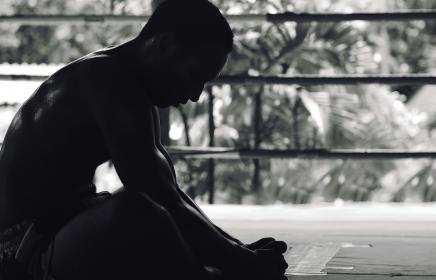It’s Not about the Nail
Thanks to Sandy Hilton for her recent workshop in Victoria, BC. It was another fantastic multidisciplinary collaborative learning weekend we hosted through our clinic, Achieve Health. She used this clip as a metaphor for understanding the biopsychosocial framework with our patients. This blog was inspired by our conversations.
The biopsychosocial framework should be utilized in all clinical encounters. It is a normal societal belief to focus on the biomedical reasons why we hurt . It intuitively makes sense when something hurts to think it means something is wrong in the affected tissues and it needs to be fixed to obtain relief. Let’s not forget the nail is relevant.
A nail in the head is a biomedical concern. Healthcare training and education is biomedical, testing is biomedical, cultural beliefs about pain and dysfunction are biomedical. However, people are not biomedical. We are complex biological organisms with thoughts, beliefs, feelings, and consciousness.
The questions that need to be asked are, ‘when to focus on the nail?’ And, ‘when to focus on the psychosocial?’ At different times during the rehabilitation process the role of the bio, the psycho and the social will each be more relevant. It is through experience and communication where we can learn what interventions are more likely to succeed.
The longer pain persists the less important the nail may become. A better idea is to find out how the nail is impacting daily life and functional activities? In persistent cases, pain is more likely being modulated by psychosocial factors. Fortunately, psychosocial influences are now more understood in the manual therapy and rehab world. We must be cognizant of each factors role and we can’t lean too heavily in one direction. We need to be appreciative of the relevance for each clinical presentation so that our biases and practice behaviours maintain rooted in the encompassing nature of biopsychosocial. Only addressing psychosocial concerns when the most obvious reason for the persons pain and dysfunction are biological is negligent. Understanding psychosocial factors doesn’t mean we are doing psychology. It means that our clinical reasoning and decision making addresses unhelpful beliefs such as pain and activity are harmful, fear avoidance beliefs, negative behaviours, lack of support, overprotective families, physical condition, personality type, coping strategies and faith/religious beliefs (Overmeer et al., 2004).
Important questions need to be asked. How their pain affects them is of primary importance. Find out how pain influences their function and daily activities? How does their pain make them feel? What enjoyable activities is it limiting?
Sometimes all we need to do is listen. The male in the above video does a great job of realizing his limitations by trying to ‘fix’ the problem. He succeeds at meeting her needs by reflecting back to her what she is saying and thus validating her experience.
When patients come to see us with painful problems it’s reasonable to ask them, what brings you here today, did anything happen, why they think they hurt, and what have they been doing for relief? Of course the psychosocial components are important in all pain experiences. However, let’s not forget that the bio is relevant. If someone hurts and the reason for their hurt is obviously a tissue problem, such as sprains and strains, let’s not ignore it.
Many patients do not benefit with a purely biomedical approach. Forcibly trying to change sensitive tissues with aggressive interventions is unlikely to benefit. The skill as a practitioner is too figure out how to blend the bio with the psycho and the social. Unfortunately, after numerous courses, conferences, workshops, and reading textbooks and research papers, I have more questions than answers on how to apply this approach most effectively. Personally, I find taking the time to listen, reflect, validate and educate through words, touch, and movement in non-threatening and pleasing ways works better at achieving desirable outcomes than a connective tissue approach.
Anyone working in rehab needs to understand the implications of the biopsychosocial framework. As health care professionals we have an intellectual obligation to learn and apply the most recent and relevant research into our practice. Let’s not blame our patients suffering on their tissues or psychosocial concerns. Treat people as we want to be treated. Compassion, empathy, education, therapeutic touch and meaningful movement provide opportunities for change that our patients need to live better.
References
Overmeer T, Boersma K, Denison E, and Linton S. (2011). Does teaching physical therapists to deliver a biopsychosocial treatment program result in better patient outcomes? A randomized controlled trial. Physical Therapy, (91), 804-19.




